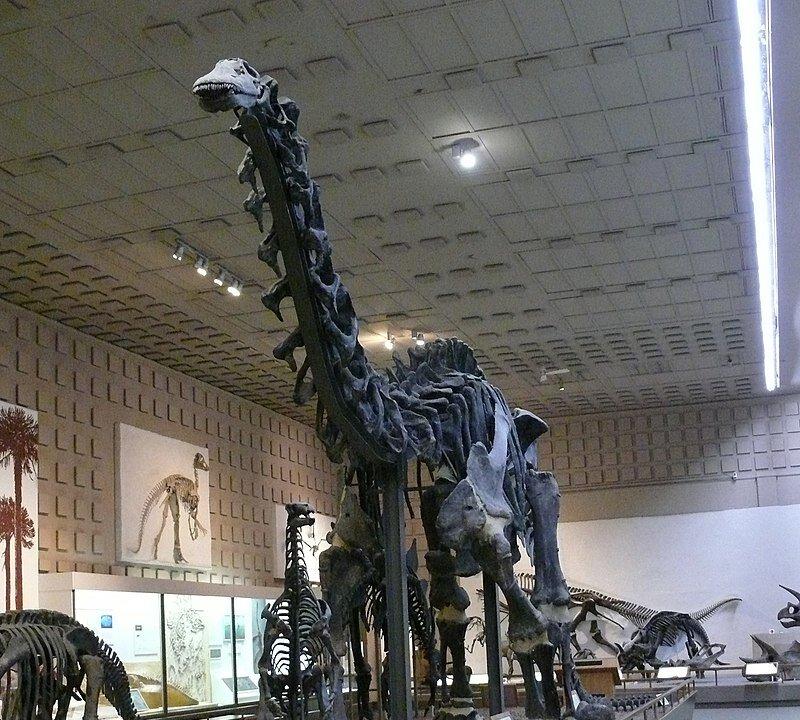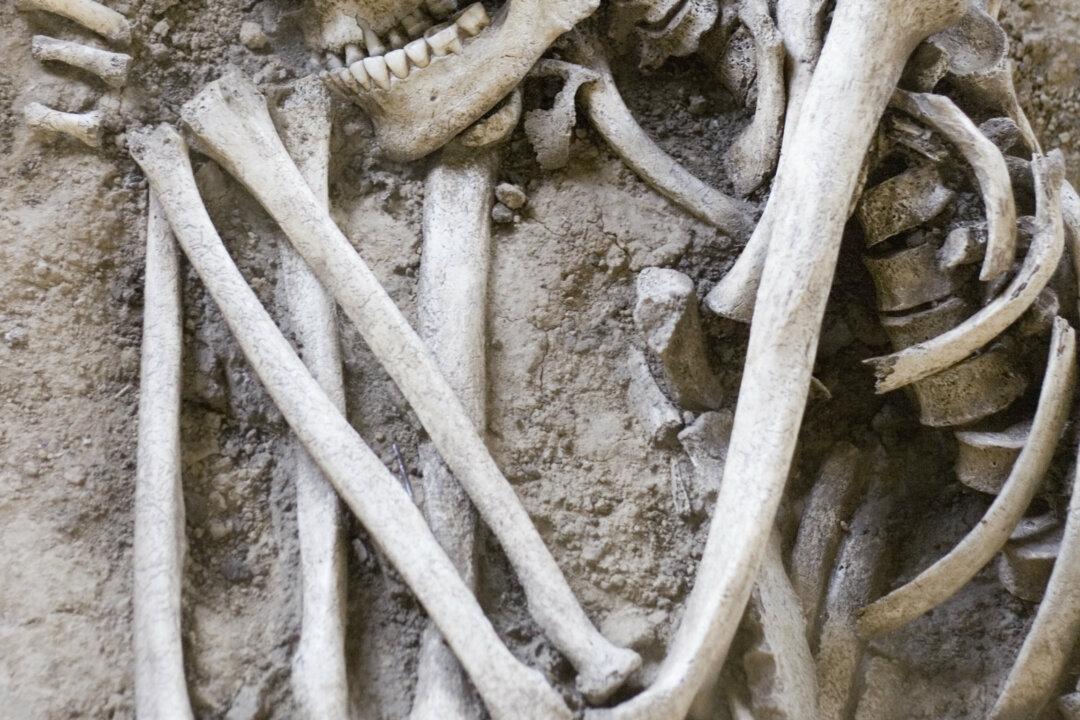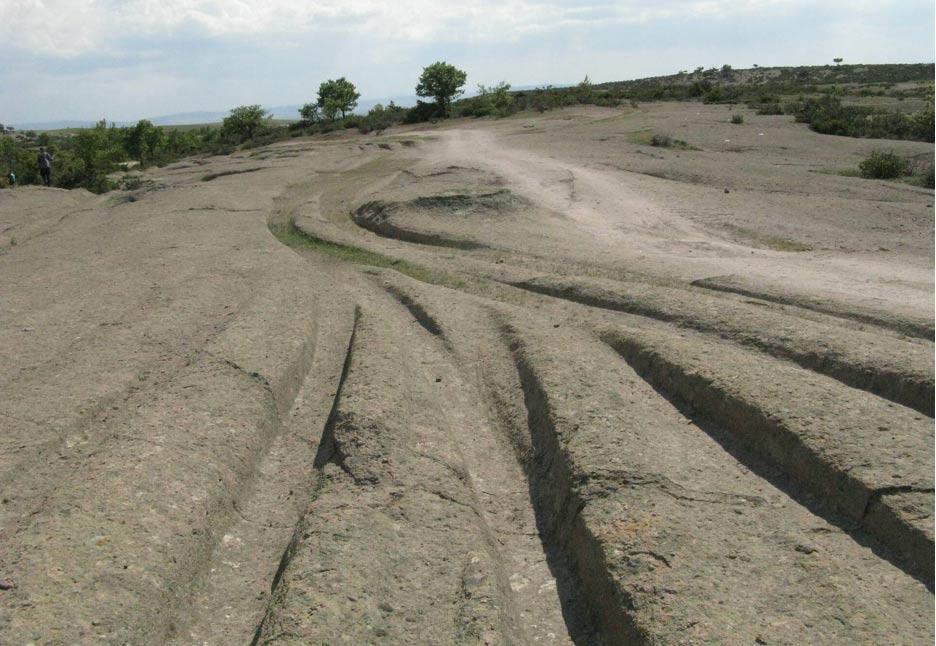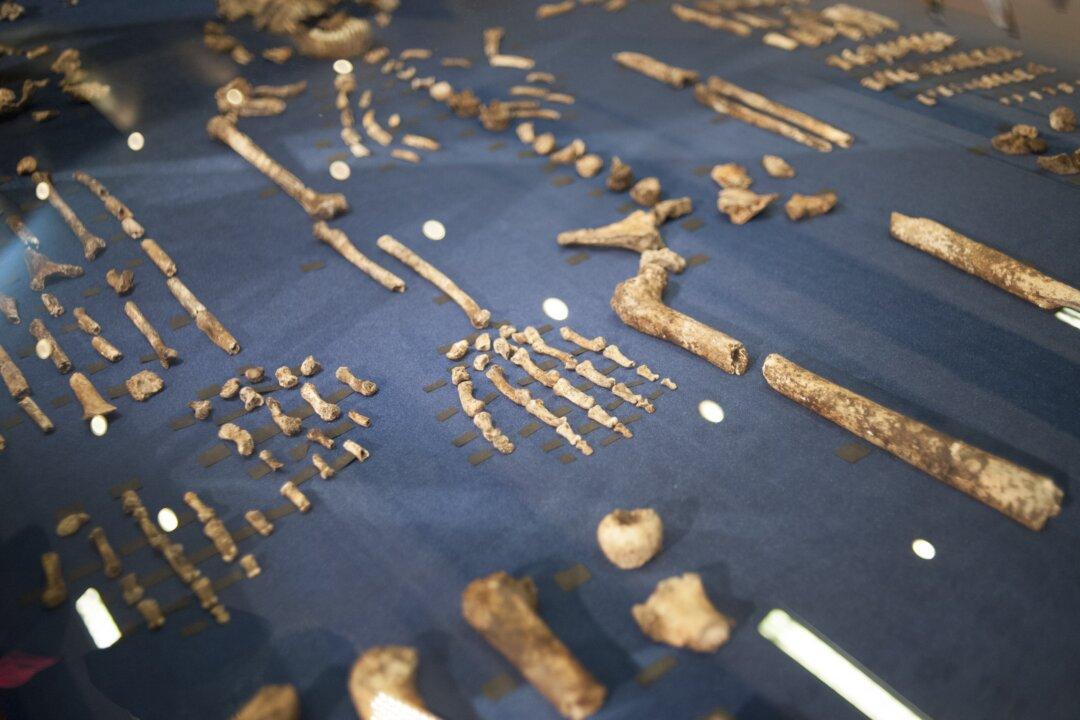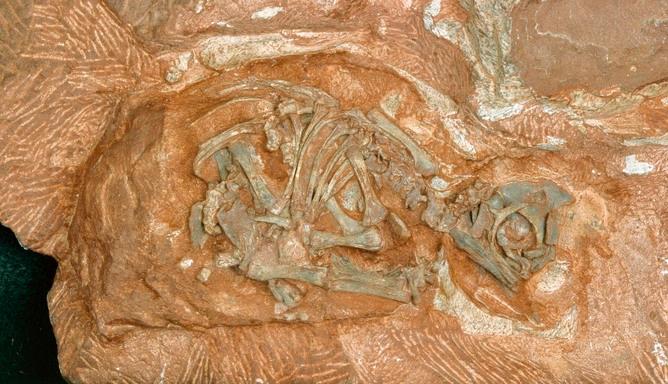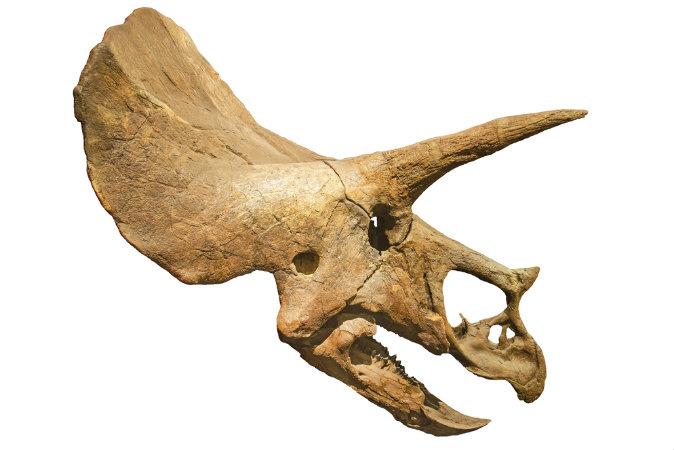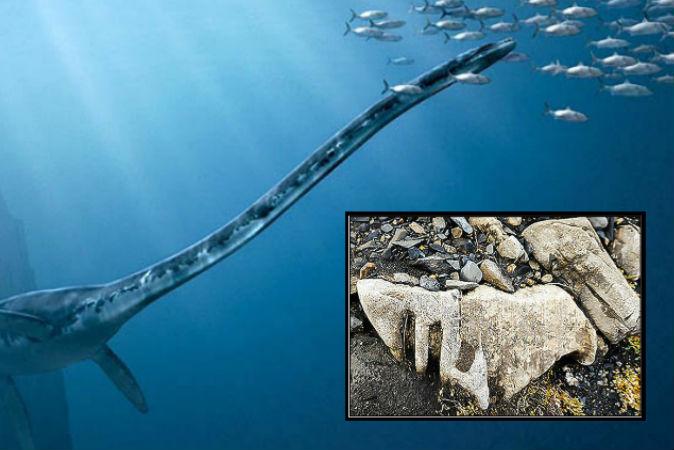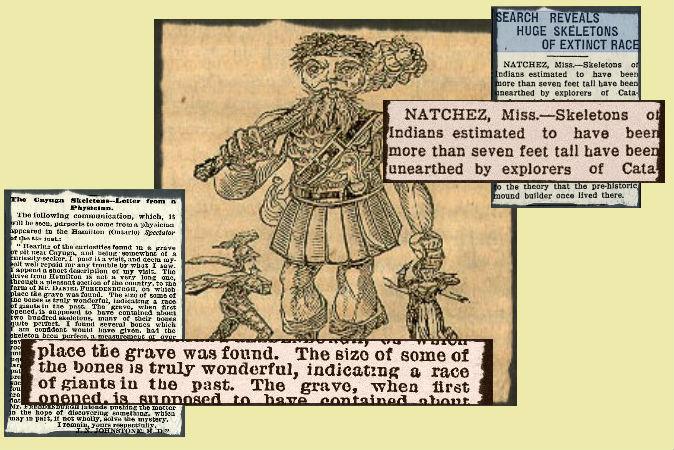Focus
paleontology
66-Million-Year Old Rare T. Rex Skull Discovered (Video)
Paleontologists with the University of Washington’s Burke Museum of Natural History and Culture have made a major discovery. Recently, they have found a 66.3-million-year old Tyrannosaurus rex skull.
|
29,000-Year-Old ‘Siberian Unicorn’ Fossil Found
Elasmotherium sibiricum, sometimes referred to as the Siberian unicorn, had a horn likely multiple feet long.
|
Giant 7-Foot to 8-Foot Skeletons Uncovered in Ecuador Sent for Scientific Testing
Will these remains prove that a race of tall people existed hundreds of years ago deep in the Amazonian rainforest?
|
Controversial Claim by Geologist: Mysterious Tracks in Turkey Left by Civilization Millions of Years Ago
Geologist Dr. Alexander Koltypin hypothesizes that prehistoric ruts in stone were left by heavy-duty ancient vehicles—not light chariots or wagons.
|
New Human-Like Species Is Discovered in South Africa
A previously unknown human-like species was seemingly capable of ritual behavior long before previously thought. A burial chamber holds 15 skeletons and many mysteries still to unlock.
|
5 Bizarre Fossil Discoveries That Got Scientists Excited
There are far stranger fossils out there than dinosaur bones. Here are some of the most bizarre specimens ever found.
|
Dinosaur Eggs Get Ready to Hatch Their Secrets—200 Million Years Later
The newest technology is revealing the secrets of the oldest dinosaur embryos in the world.
|
55,000-Year-Old Skull Found in Israel Hailed as Key to Human Prehistory
A 55,000-year-old human skull found in northern Israel confirms that humans were in the area at the time. Scientists have theorized that humans migrated from Africa to Europe between 40,000 to 60,000 years ago, and this skull is being hailed as key evidence in this theory.
|
Did Humans Walk the Earth With Dinosaurs? Triceratops Horn Dated to 33,500 Years
A triceratops brow horn discovered in Dawson County, Mont., has been controversially dated to around 33,500 years, challenging the view that dinosaurs died out around 65 million years ago.
|
3 Distinguished Linguists Examine Mysterious Origin of Native Americans
Who peopled the New World, and when? Native American origins aren’t so clear-cut, some experts say, citing genetic testing, curious artifacts, and linguistic diversity.
|
Did Giants Exist? Part 3: Was Gigantopithecus a Giant Prehistoric Man?
Long ago, somewhere between 300,000 and 8 million years ago give or take a millennium or two, a giant creature hunkered through the wilds of China and Southeast Asia.
|
Did Giants Exist? Part 1: Legends and America’s Giant Skeletons
Abraham Lincoln believed giants existed. Many accounts of giants have been given throughout history, and many bones reportedly found in the American Midwest.
|
Woolly Mammoth Brain Found—Best Specimen in History
She is the most intact woolly mammoth ever found. What could this mean for cloning?
|
Woolly Mammoth Gave Birth to 9 Babies: Can She Have Another 28,000 Years Later?
New blood samples have been discovered in the remains of a woolly mammoth, a long-extinct creature; experts began research this month in the hunt for live cells.
|
Dinosaur Puzzle Solved, Revealing the Weirdest-Looking Creature to Walk the Planet
Everywhere scientists look it seems like they are finding dinosaurs. A new species is emerging at the astounding pace of one per week. And this continues with the announcement of perhaps the strangest dinosaur find over the past few years: the toothless, hump-backed, super-clawed omnivore Deinocheirus mirificus that lived about 70m years ago in what is now Mongolia.
|
66-Million-Year Old Rare T. Rex Skull Discovered (Video)
Paleontologists with the University of Washington’s Burke Museum of Natural History and Culture have made a major discovery. Recently, they have found a 66.3-million-year old Tyrannosaurus rex skull.
|
29,000-Year-Old ‘Siberian Unicorn’ Fossil Found
Elasmotherium sibiricum, sometimes referred to as the Siberian unicorn, had a horn likely multiple feet long.
|
Giant 7-Foot to 8-Foot Skeletons Uncovered in Ecuador Sent for Scientific Testing
Will these remains prove that a race of tall people existed hundreds of years ago deep in the Amazonian rainforest?
|
Controversial Claim by Geologist: Mysterious Tracks in Turkey Left by Civilization Millions of Years Ago
Geologist Dr. Alexander Koltypin hypothesizes that prehistoric ruts in stone were left by heavy-duty ancient vehicles—not light chariots or wagons.
|
New Human-Like Species Is Discovered in South Africa
A previously unknown human-like species was seemingly capable of ritual behavior long before previously thought. A burial chamber holds 15 skeletons and many mysteries still to unlock.
|
5 Bizarre Fossil Discoveries That Got Scientists Excited
There are far stranger fossils out there than dinosaur bones. Here are some of the most bizarre specimens ever found.
|
Dinosaur Eggs Get Ready to Hatch Their Secrets—200 Million Years Later
The newest technology is revealing the secrets of the oldest dinosaur embryos in the world.
|
55,000-Year-Old Skull Found in Israel Hailed as Key to Human Prehistory
A 55,000-year-old human skull found in northern Israel confirms that humans were in the area at the time. Scientists have theorized that humans migrated from Africa to Europe between 40,000 to 60,000 years ago, and this skull is being hailed as key evidence in this theory.
|
Did Humans Walk the Earth With Dinosaurs? Triceratops Horn Dated to 33,500 Years
A triceratops brow horn discovered in Dawson County, Mont., has been controversially dated to around 33,500 years, challenging the view that dinosaurs died out around 65 million years ago.
|
3 Distinguished Linguists Examine Mysterious Origin of Native Americans
Who peopled the New World, and when? Native American origins aren’t so clear-cut, some experts say, citing genetic testing, curious artifacts, and linguistic diversity.
|
Did Giants Exist? Part 3: Was Gigantopithecus a Giant Prehistoric Man?
Long ago, somewhere between 300,000 and 8 million years ago give or take a millennium or two, a giant creature hunkered through the wilds of China and Southeast Asia.
|
Did Giants Exist? Part 1: Legends and America’s Giant Skeletons
Abraham Lincoln believed giants existed. Many accounts of giants have been given throughout history, and many bones reportedly found in the American Midwest.
|
Woolly Mammoth Brain Found—Best Specimen in History
She is the most intact woolly mammoth ever found. What could this mean for cloning?
|
Woolly Mammoth Gave Birth to 9 Babies: Can She Have Another 28,000 Years Later?
New blood samples have been discovered in the remains of a woolly mammoth, a long-extinct creature; experts began research this month in the hunt for live cells.
|
Dinosaur Puzzle Solved, Revealing the Weirdest-Looking Creature to Walk the Planet
Everywhere scientists look it seems like they are finding dinosaurs. A new species is emerging at the astounding pace of one per week. And this continues with the announcement of perhaps the strangest dinosaur find over the past few years: the toothless, hump-backed, super-clawed omnivore Deinocheirus mirificus that lived about 70m years ago in what is now Mongolia.
|

